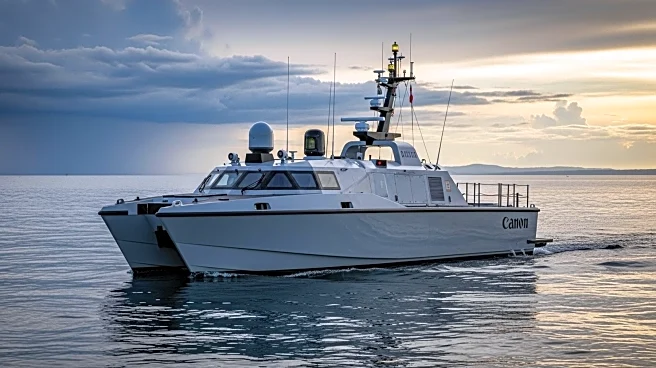What is the story about?
What's Happening?
Sea Machines Robotics Inc. has announced the launch of six new products aimed at advancing marine autonomy for defense customers. The expansion includes a modernization of the SM300 hardware lines, the introduction of two high-level software APIs, a real-time cloud-based fleet data platform, and the unveiling of a new high-performance unmanned surface vessel (USV) named STORMRUNNER. The SM300-SP is a special-purpose hardware version designed for emerging fleets of attritable small USVs, while the SM300-NG offers a new generation autonomy system with increased computing power. The SMLink Stream/Control-APIs allow third parties to stream data and control the autonomy system, and the FLEETVIEWER platform provides real-time vessel data visualization. The STORMRUNNER USV, an 8-meter vessel, is designed for high performance and reliability, capable of reaching speeds of 40 knots and covering over 500 nautical miles with a payload capacity of 1,100 lbs.
Why It's Important?
The expansion of Sea Machines' product line is significant for the defense sector, as it enhances the capabilities of marine autonomy systems. This development is likely to benefit military operations by providing advanced tools for surveillance, reconnaissance, and other maritime missions. The introduction of the STORMRUNNER USV, with its high-speed and long-range capabilities, offers a strategic advantage in naval operations. The new APIs and data platforms enable better integration and control of autonomous systems, potentially leading to more efficient and effective maritime operations. This expansion reflects a growing trend towards the use of autonomous technology in defense, which could lead to increased demand for such systems and drive innovation in the industry.
What's Next?
As Sea Machines rolls out these new products, defense customers are expected to integrate them into their operations, potentially leading to enhanced maritime capabilities. The company may also seek to expand its market presence by targeting international defense markets. The adoption of these technologies could prompt other companies in the sector to innovate and develop competing products, further advancing the field of marine autonomy. Additionally, regulatory bodies may need to address the implications of increased autonomy in defense operations, ensuring that safety and ethical standards are maintained.
AI Generated Content
Do you find this article useful?














